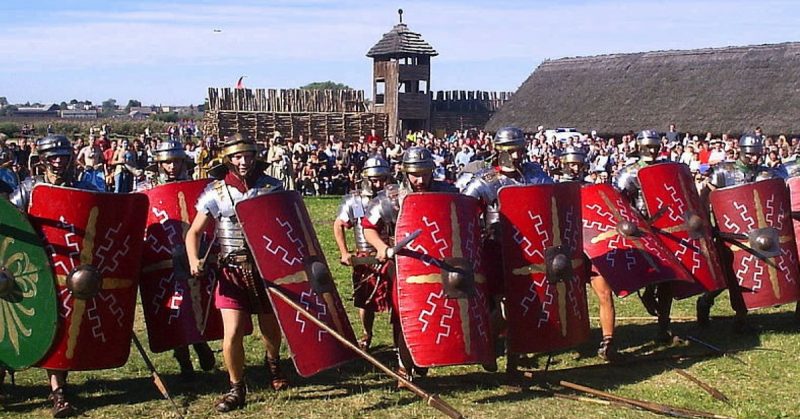Roman legionaries were among the most ruthlessly efficient soldiers in the ancient world. But even for these highly disciplined and well-equipped men, the armies that conquered half of Europe, daily life was far from glamorous.
Getting Up
Gaius wakes up early in the room he shares with the other seven men of his squad. Part of a long barracks block, it’s just big enough for their bunk beds. They have another room in the block, meant for storing equipment, though he’s been tempted to sleep there on nights when Carausius’s snoring got too loud.
After dressing in his tunic, belt and sandals, Gaius heads down to a room at the end of the barracks block. Here there is a fire burning in a hearth, chasing away some of the miserable cold of Britannia. Other early risers are making porridge and Gaius joins them. Most of their meals are like this – flour used to make porridge or bread, with a few beans or vegetables in the evening and some meat on good days. The army marches on grain.
By the time everyone’s up, Gaius has finished eating and started donning his armor. Then it’s off to the parade ground for the morning muster. Three men are missing, not bad given the sickness that comes with this awful weather. Once they’ve been counted and inspected, everyone is assigned their daily tasks.
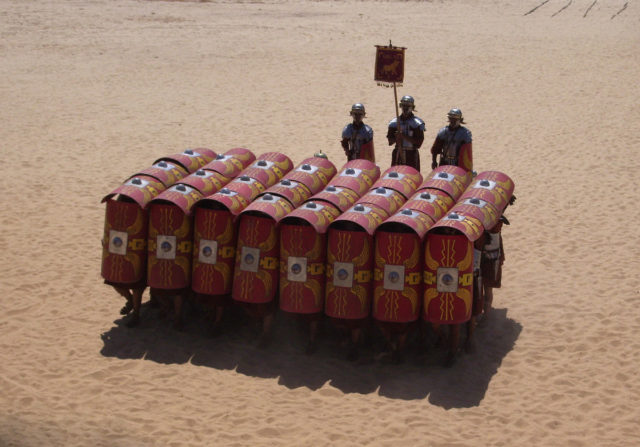
Fatigues
This morning, Gaius has duty at the bath house. It’s not the best job to have, but far from the worst.
The worst is latrine duty. Cleaning the pipes from the latrine block to the pits, and then emptying out those pits if they’re full, is the most disgusting thing he has to do outside the battlefield. Cleaning and maintaining the bathhouse, though sometimes as labor intensive, isn’t anywhere near as bad. It feels good to be working with his hands like his father did, replacing cracked tiles and pipes.
The best sort of duty is “boots” – equipment maintenance. It’s good to have the time to fix his kit and make sure it’ll serve him well in future. Gaius takes a lot of pride in his kit – after all, it’s the only thing here that’s truly his. Even being given officers’ kit to maintain isn’t bad, as he gets to sit down and stay active. Some men prefer guard duty, standing for hours without having to do anything, but for Gaius, that’s just boring.
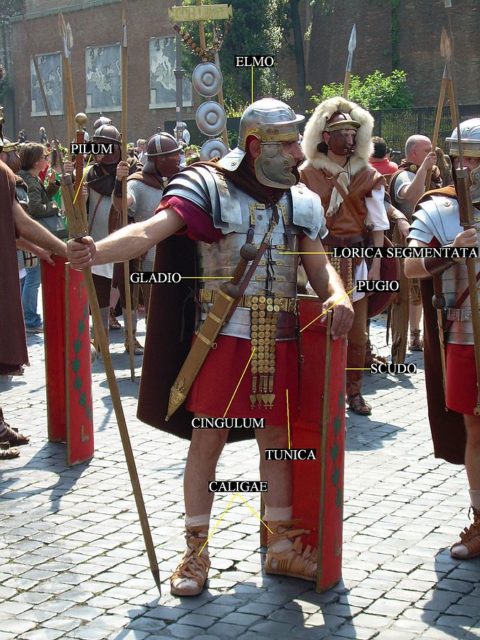
Training
This camp’s commander is the greatest sticklers for training Gaius has ever encountered. Despite the pleas of senators, he’s been at plenty of bases where training was a rare break from the monotony of camp chores and administration. Here, it’s a regular event.
While some soldiers are sent out on patrol and to deal with a legal dispute in the nearby town, Gaius and his squad are led out onto the training field outside of camp. With only the afternoon to work in, they have marching drills, javelin practice, and combat with blunt weapons. Facing off against Carausius, Gaius takes the opportunity to give his comrade a good wallop around the head – punishment for all that snoring. By the looks of Carausius’s helmet, Gaius isn’t the only one.
In the summer, they might spend whole days training. Then there will be marches into the countryside, mock battles, and even some construction work, practicing building a fortified camp in hostile territory. For today, though, it’s the regular stuff.
There are auxiliaries training nearby, and Gaius takes a moment to watch. Their cavalry gallop up and down a track, throwing javelins at straw targets from horseback. Archers and slingers then step up to shoot at those same targets. Gaius is glad he’s a legionary, not an auxiliary. The pay, the equipment, and even the status of his job are far better.
https://www.youtube.com/watch?v=q7rPY3hq-EM
Parades and Ceremonies
Today there is a rare treat – the annual ceremony honoring the memory of the divine Julius Caesar. Almost everyone in camp is gathered near the end of the day, buglers calling them to attention on the parade ground. Hundreds of men in gleaming armor, weapons at their sides and shields in hand, standing straight and proud.
The commander, a senator of the Julian clan, talks at length about the greatness of Caesar, how he saved Rome from corruption and barbarity. Gaius has heard it all before, but he’s happy to stand through it for what comes next.
At last, a huge bull is led out into the center of the parade ground. Though sacrifices are made for dozens of festivals each year, this is the one where their commander spares no expense. While centurions hold the beast in place, the commander slits the bull’s throat, praying as he does so. Then they all pray together.
Half an hour later, the bull is roasting over an open fire, the delicious smell filling the camp. Gaius waits eagerly with his comrades. It’s been a long, hard day of work. He’s looking forward to this.
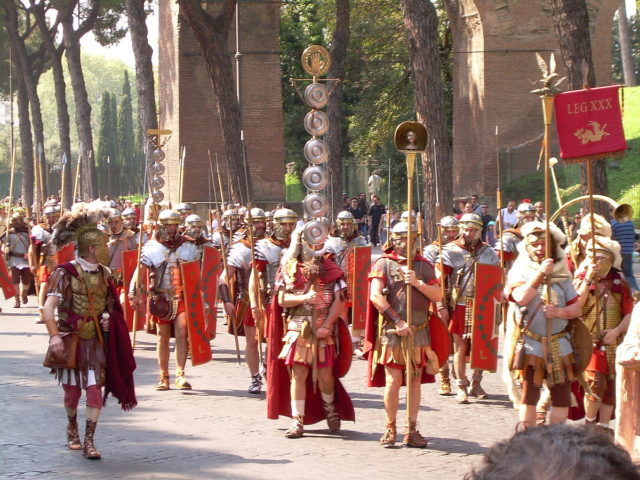
Life on the March
A month later, the legion is on the march.
In some ways, life is now very different. Gaius spends a large part of the day marching, wearing through the brass studs of his sandals. He carries with him all his armor, weapons, and tools for building camp, as well as a bag of flour.
Every afternoon they build a rampart around a different camp site, then make their meal from those bags of flour. Sooner or later, there may be a battle or a village to burn, but mostly life is just marching.
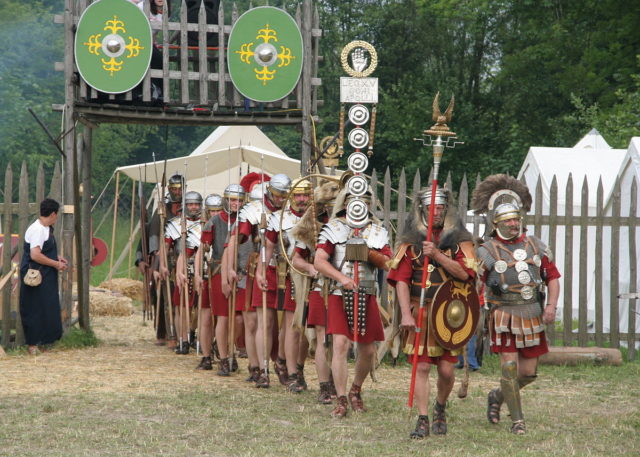
In some ways, it’s the same as at base. He shares a tent with the same seven men. He marches with them, talks with them, trains with them. If they’re given foraging or guard duty then they do it together. There are still latrine pits to be dug and equipment to be mended.
In camp or on campaign, legion life is just as unexciting for Gaius.
Sources:
Adrian Goldsworthy (2003), The Complete Roman Army.
Reay Tannahill (revised edition, 2002), Food in History.
